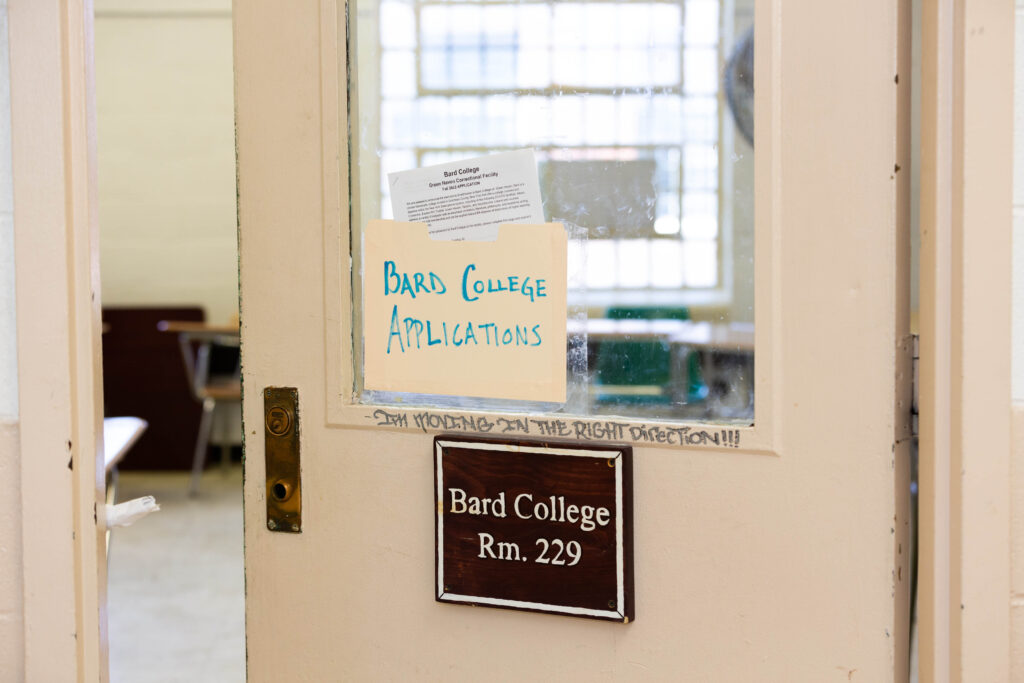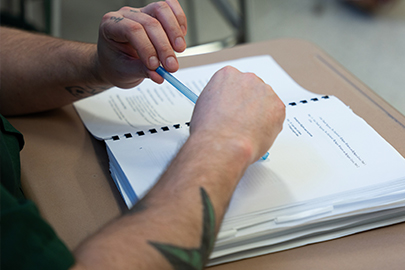Student Shawnta Montgomery spoke inspiring words at her graduation ceremony: “Inside the walls of a classroom, you escape the walls of a cell — and you become an individual again.” Montgomery was graduating from the Bard Prison Initiative program, featured in the new PBS and Ken Burns documentary, College Behind Bars.
The four-part series tracks a fascinating prison education initiative Bard began in 1999, which now serves 300 individuals. Two dozen similar programs exist in 28 states, though Bard’s is the most highly-regarded.
The documentary provides a fascinating window into the initiative’s prison classrooms: Classic Greek literature, Shakespeare, history, writing seminars, Chinese. The small, seminar-style classes filled with engaged, articulate students could be those of any elite liberal arts college — if not for the green jumpsuits.
Bard Prison Initiative students benefit from the wisdom and experience of Bard professors, who hold them to the same high expectations as their main campus students. Some students enter with educational abilities so low, they struggle to read basic phrases, let alone the complicated writing of The Odyssey or King Lear.
Additionally, they study without the internet — a benefit most students take for granted.
Above all, what shines through is gratitude. “You’re putting words to systems that you’ve recognized your whole life, but you never had a word for. Hegemony. Alienation. It’s hard, but it’s rewarding,” said BPI participant John Gonzalez.
Is it idealistic, even frivolous, for men and women in prison to be reading classical literature? Some argue that time and resources would be better spent teaching prisoners skills or trades so that they can obtain employment after graduation as laborers.
Though the two types of study are not mutually exclusive, trades are typically emphasized for certain types of learners at the expense of the liberal arts.
Yet, there is one intrinsic benefit to the classical studies Bard Prison Initiative students undertake: They grapple with texts and are drawn into stories that speak of the age-old struggles of the human condition. What does it mean to live a good life? What is justice? Why does power corrupt?
“No one ever taught me any of that,” said student Giovanni — a quip that became the title of the PBS series’s first episode.
The vast majority of participants have never experienced an education that called upon them to ask these questions. Some think that even in prison, they should not have access to it.
Though the program is now mostly privately funded, it previously received federal funding until the government ceased providing educational subsidies to prisons under the 1994 crime bill. New York Gov. Andrew Cuomo also pledged state funding for the program in 2014, but backlash led him to withdraw the policy proposal. Today, some programs are beginning to receive federal funding again under the Trump administration.
The most effective argument at the time (and likely today) is that taxpayer dollars should not subsidize free college for criminals, especially when the majority of the nation cannot afford it.
Yet, Bard Prison Initiative’s stellar outcomes make it ripe for private philanthropic investment. Participants have a recidivism rate of 4%, compared to the national average of 43%. A study from RAND estimates that for every $1 invested in the program, the country saves five dollars in re-incarceration costs over three years.
There are 2.3 million people incarcerated in the United States, some of whom wound up there because the education system failed them previously. As AEI scholar Gerard Robinson commented, “The right thing to do is not only give them a second chance, but to also admit the fact that many of them didn’t receive a first chance at school.”
Though it cannot begin to be quantified, the sense of authentic freedom education brings to those behind bars may be even more lasting than any return on investment.



